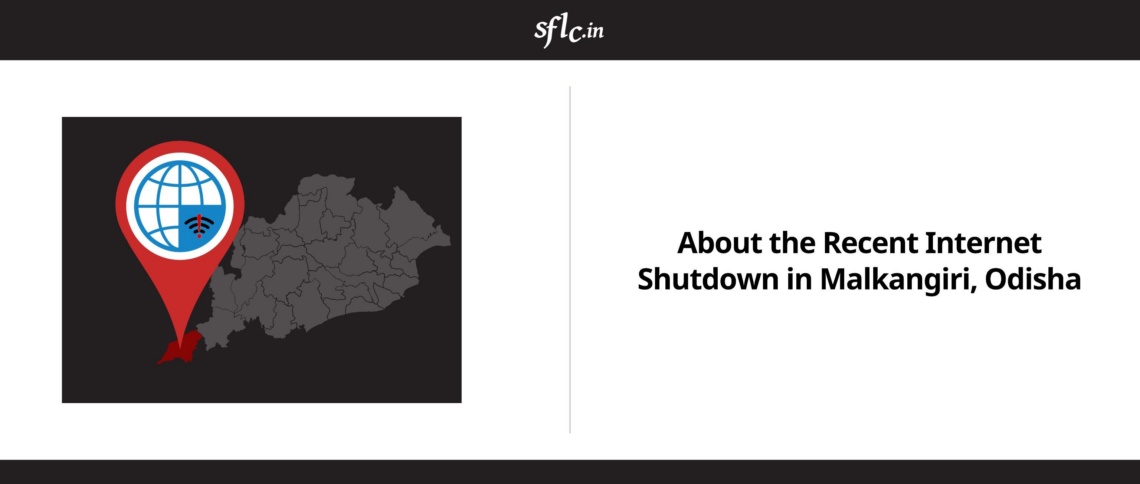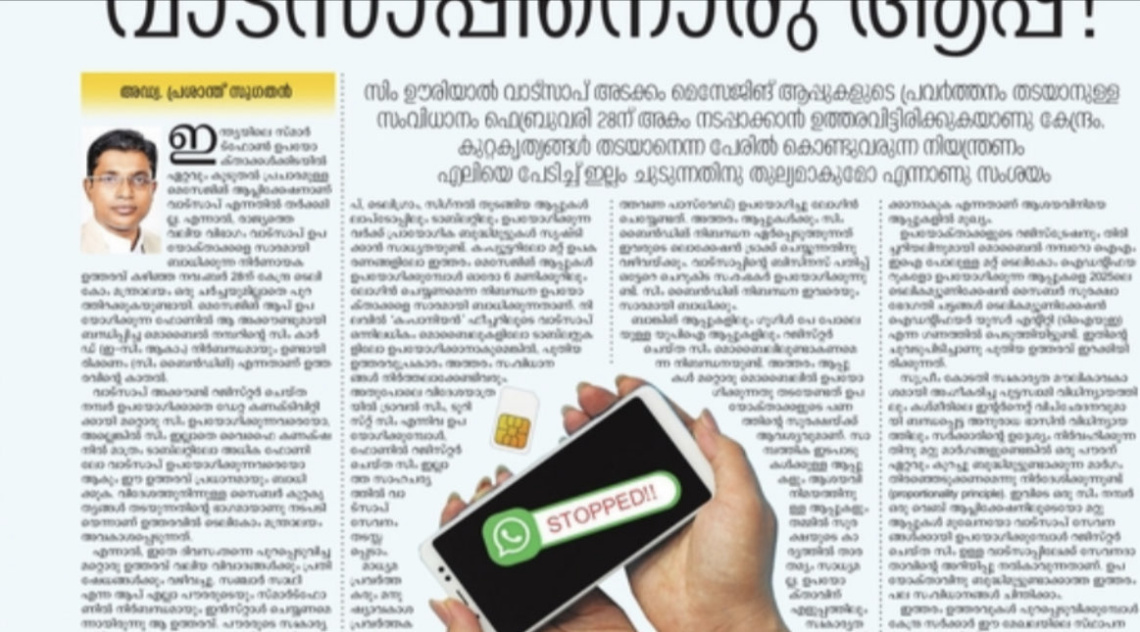The Aadhaar – privacy debate witnessed a heated battle of words in the Supreme Court on Tuesday, October 6, when the Union of India, along with the State Governments of Gujarat, Haryana, Madhya Pradesh, Jharkhand and Andhra Pradesh, and Government agencies including RBI, SEBI and TRAI, sought the clarification and modification of an earlier interim order made by the SC in the matter of K.S. Puttaswamy and Ors v. UOI. The order, dated 11th August 2015 had referred the entire batch of petitions in the above mentioned case to a Constitutional Bench and in the interim permitted the use of Aadhaar only for PDS and LPG schemes.
Attorney General, Mukul Rohatgi representing the Union of India, started his arguments by stating that 92 crore people in India already have an Aadhaar card. It is only a number and can be used as the most widely held ID Card. For example, when it is checked for entry in the airport, there are no biometrics involved in that process. He wanted the SC to permit its non restricted usage on a voluntary basis, said he won’t get into the argument of privacy but gave m any elaborate examples on how the use of Aadhaar will be beneficial.
The first example was regarding elimination of fake people and ghosts in PDS schemes. He showed a small, portable machine in court that would be used. When a person’s biometrics are registered with Aadhaar, he claimed this machine would match his fingerprint with the picture on his Aadhaar card. This would authenticate a person’s identity and hence, ensure that the real person gets the benefits. He further elaborated with the example of MNREGA. He said that for the person employed under MNREGA, the money is directly credited to his bank account. Supposing, the bank is a few miles away from his village. He said that the Government as of now has 85,000 bank correspondents, 5-6 villages has one correspondent. Bank correspondent is like a mobile bank. He goes with the portable machine to each village and allows the MNREGA worker to withdraw or deposit money as per his need and provides them with a receipt. He claimed that this is a facility given to several crore workers. In this concept, it is not compulsory for these people to use this process that is facilitated by Aadhaar, it is purely on a voluntary basis.
The above mentioned method also stands true for pension schemes where old, infirm and widows are also asked to go to the pension office once a year in November and say that they are alive. These people can also use the facilities of bank correspondents and authenticate their identities with the help of Aadhaar. People can also open their bank accounts by this facility. Under the PM Jan Dhan Yojna, there is a scheme of a Zero Balance Account where a person can open a bank account without any initial balance. He asserted that all are schemes for the financial inclusion of those who are left behind. In a variant of these examples, he also mentioned that an Aadhaar card can also be used as an ID card by a migrant traveling in a train, etc.
Mr. Rohatgi insisted that it was not for 1 or 2 or 10 persons to say that we have some concerns over privacy and that someone is going to snoop. According to him, the fear is that the Aadhaar server will have the information about the population. He maintained that if a person with Aadhaar number XYZ went to the UCO Bank in SC, the UIDAI server only knows that a person with Aadhaar number XYZ went to a UCO Bank. He doesn’t know what he did there or about the transaction that was made. At this point, Justice Bobde commented that the UIDAI server will in this way, always know the location of a person. Mr. Rohatgi’s reply was about how mobile phones now a days know the location. Justice Chelameswar remarked, that a phone cannot keep a track of your location if the location services are switched off and Justice Bobde added that the people Mr. Rohatgi is talking about do not own smart phones. Mr. Rohatgi commented that even a phone costing 2000 rupees can track the location, thanks to the mobile towers and added that it doesn’t matter if they know where a person was because they cannot tell what he did there.
Justice Bobde told the AG that the court wanted to know if there are real apprehensions about the leaks. The AG fiercely replied that 50,000 people want to use Aadhaar for MNREGA and 10 people have some notions on privacy and he doesn’t understand what the big deal about it is. He said he was fighting not for the rich and effluent that have 5 million ways to go about things, but for the people with lesser means. Justice Bobde’s reply was simply that the court is just trying to balance the rights. The AG agreed that this data is only to be shared after a court order, but doesn’t understand what will happen even if the data is shared.
K.K. Venugopal, representing Centre for Civil Society
Mr. Venugopal said that assuming a person has a right to privacy, he should be allowed to waive it for greater benefit. But, the petitioners argue that the person will have to maintain his privacy. His argument was that a person can decide if he wants his privacy. Justice Bobde commented that a lot of uneducated people don’t know what they are parting with. Mr. Venugopal replied that what is the importance of these particulars to a poor man who is starving? The Justice said, that the parting with biometrics is only possible if the consent is informed. He added that the people do not have the information on the basis of which they can make an informed choice. They give it up for the benefits they are shown Aadhaar would provide. The AG interjected that if people have problems with it, they can choose not to use it. But Justice Bobde aptly retorted that the people do not know that THERE IS a problem to begin with. At this point, the AG resorted to the similar argument of not knowing what the notions of privacy were and that there should be no problems in the voluntary usage of Aadhaar card.
Justice Bobde said that the court saw the advantages, but they were here to see how much the privacy concerns mattered. Mr. Venugopal replied that what if we don’t want privacy, the court is insisting that we retain our privacy.
Government Agencies
Pension Fund Regulatory and Development Authority: They claimed that they had an online process for registering for the pension fund. It could be linked with one’s Aadhaar number and would simply port all the details from Aadhaar’s database, hence making the process very simple and paperless. The other method included filing lot of papers and was cumbersome. His main argument was about making otherwise cumbersome processes, paperless with the help of Aadhaar.
TRAI: They claimed that they had been issuing SIM cards since 2011 by using the Aadhaar number. This was for decreasing SIM card abuse and tracking down crime. The use of this was voluntary but they were soon thinking of making it mandatory. Justice Chelameswar, at this point could not understand how a SIM card and Aadhaar were linked to stopping terrorism and crime. The TRAI representative replied that SIM cards are usually sold without verification, terrorists don’t have Aadhaar and hence, they were trying to make it mandatory to verify the buyer of the SIM Card.
RBI: They were aggrieved about having to deny a lot of people who wanted to open bank accounts and only had the Aadhaar card as an ID proof. They sought clarifications on the interim order in this regard, i.e. where they to turn people down because the order restricted them to use Aadhaar cards for anything except LPG and PDS? The Insurance Regulatory and Development Authority of India (IRDAI) had the same grievance.
The AG in his final remarks said that he was not blaming the court, but he simply wanted to make the use voluntary for facilitating services to people with fewer means.
Mr. Shyam Divan appearing for the petitioner K S Puttaswamy started his arguments by pointing out that notice should not be issued on any of these applications because firstly, the matter was pending before a constitutional bench, secondly, because the interim order was passed very recently and thirdly, because at the very threshold the party in question is saying that whatever order you pass we will not obey.
He said that the order dated 11th August, 2015 had three orders:
-
The reference to the constitutional bench
-
That the constitutional bench notice the urgency of the matter
-
Interim order
According to him all of these orders have to be read together. He contested that there no wide publicity given by central government with respect to the voluntariness of Aadhaar and that before they ask for a modification, the AG should satisfy that he has complied with the interim order. At this point, the AG produced a document that had a list of spending done and advertisements run across the nation. Mr. Divan argued that these Advertisements were in reality promoting Aadhaar. (for example, the text of the scroll running on the Aadhaar website and the advertisement usually given read: “Choose Aadhaar. It is voluntary. It is not mandatory for a citizen to obtain Aadhaar card.”) He asserted that there were no government officials on site to counsel the people registering for Aadhaar.
Next, he argued that when the matter was referred to the Constitutional bench, nothing was pending before these judges on that matter, so these applications could not be taken up. (A judgment called Modern Dental (2012 (4) SCC 707) was cited on this point). The AG remarked that with this analogy, even the interim order would be invalid because it was made after the reference order on 11th August, 2015. Mr. Divan contended that the order was passed very recently and since then there has been no change in circumstances that could effectively warrant a change in the interim order. He further said that Aadhaar had no constitutional or administrative backing and was based on a notification. There is no mention of biometrics in the role and responsibilities of UIDAI. Mr. Divan asserted that fingerprints are a person’s most unique identity markers and belonged with him and it would only be a police state where a person would be asked to part with their biometrics when there is no legal sanction or administrative backing. He raised concerns about privacy on the grounds of lack of proprietary technology for registering biometrics and that French and US Defense contractors had close links to this project’s registration company.
He further said that the people had no option of opting/backing out of the system once registered. Regarding the problem raised on being the sole identity for many, Mr. Divan read out a Aadhaar registration form that needed at least one of the 18 listed ID proofs to be eligible for an Aadhaar card. The other system was an Introducer system that people who did not have any prior ID proof could use where a person from the community would corroborate their particulars. Mr. Divan showed data that only 2 lakh people out of the 92 crore had availed this facility. This implies that the rest already had a valid ID proof.
Meenakshi Arora raised some different points regarding the improvement of social welfare schemes. She said that the government has been shown demonstrations on how fingerprints can be easily duplicated with just fevicol. The machine that the AG produced, she said would hence be not as efficient as he is claiming in plugging leaks and weeding out ghosts from welfare schemes. She also said that there is a lip service being done about the part of the order that states that Aadhaar is not mandatory. The way the Government is describing the schemes, it seems that either one chooses Aadhaar or the cumbersome process. She produced affidavits from MNREGA workers, which said that when a worker did not have the Aadhaar card, the first thing the officials would say is that take him to the nearest Aadhaar office. She stated that the Government’s way of working was it is either my way or the high way and this cannot be the approach of a system or the government for its population.
Mr. Sai Deepak was representing Beghar Foundation, and argued that Aadhaar was used as an instrument of exclusion instead of inclusion. For manual workers and people who do strenuous work with their hands, do not have clear fingerprints and the iris scans do not work for people with cataracts and corneal blindness. Therefore, the system excludes this category of people.
The Attorney General made the last comments by saying that Mr. Divan’s arguments did not counter the benefits provided by Aadhaar to several crore people. He prayed for modification of the earlier interim order to non restricted voluntary use of Aadhaar.
UPDATE 1: Based on arguments advanced, the Supreme Court on October 7, 2015 issued an order referring all Aadhaar petitions to the Constitutional Bench. While pronouncing the order, the Court observed that since the main petition had already been referred to the larger Constitutional Bench, all opinions, including those raised on the previous day, deserved to be heard and adjudicated upon by the larger Bench.
UPDATE 2: On October 8, 2015, the Supreme Court issued a notice listing the Aadhaar petitions before the Constitutional Bench. The first hearing before the Constitutional Bench is now scheduled for October 14, 2015 at 2:00 PM.


